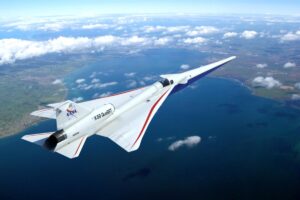Decoding ARINC 429 vs MIL-STD-1553: Key Differences
Introduction
In the world of avionics, efficient and reliable communication between systems is paramount. Aircraft, whether commercial or military, are equipped with a diverse array of subsystems that must communicate effectively under demanding operational conditions. Two of the most widely used communication protocols in this domain are ARINC 429 and MIL-STD-1553. Each has been developed to address specific requirements—ARINC 429 for commercial aviation and MIL-STD-1553 for military-grade robustness and control. This white paper delves deep into the architecture, performance, use cases, and evolution of both protocols, helping engineers and system designers choose the right standard for their applications.
1. Historical Background and Purpose
1.1 Origin of ARINC 429
ARINC 429 was developed by Aeronautical Radio, Inc. (ARINC) to standardize data communication in commercial aircraft. Initially introduced in the late 1970s, ARINC 429 emerged to ensure compatibility between avionics systems from various manufacturers. It became a central part of commercial flight control and navigation systems, valued for its simplicity and reliability.
1.2 Origin of MIL-STD-1553
MIL-STD-1553 was initiated by the U.S. Department of Defense in the early 1970s. Designed for military aircraft and later adopted in spacecraft and ground vehicles, it introduced a fault-tolerant, command/response-based bus system. The protocol emphasizes robustness, synchronization, and redundancy, which are vital for mission-critical defense applications.
2. Technical Architecture
2.1 Data Bus Design
ARINC 429 employs a unidirectional, point-to-point data bus where one transmitter communicates with multiple receivers. The signal is broadcast in a one-way fashion, which simplifies bus arbitration but limits interactivity.
MIL-STD-1553 uses a dual-redundant, bidirectional data bus structure with a Bus Controller (BC), multiple Remote Terminals (RTs), and optional Bus Monitors (BMs). This architecture supports comprehensive control over communication flow and enables real-time command execution.
2.2 Signal Characteristics
ARINC 429 uses differential signaling at two standard data rates: 12.5 kbps (low speed) and 100 kbps (high speed). The signal format is a 32-bit word with defined fields for label, data, and parity.
MIL-STD-1553 operates at 1 Mbps over a transformer-coupled, twisted-shielded pair. It uses Manchester encoding for data integrity and includes synchronization, status, and command/response structures within its 20-bit word formats.
3. Protocol Operation and Data Handling
3.1 Communication Control
ARINC 429 transmits data continuously, regardless of receiver requests. There is no handshake or acknowledgment mechanism, which simplifies design but provides limited feedback on message reception or error handling.
In contrast, MIL-STD-1553 follows a command/response model controlled by a centralized BC. RTs respond only when prompted, ensuring message sequencing, error reporting, and timing control.
3.2 Message Structure and Encoding
The 32-bit word in ARINC 429 contains a label (8 bits), SDI (2 bits), data (19 bits), SSM (2 bits), and a parity bit. Each field is critical for message interpretation by the receiving system.
MIL-STD-1553 messages are structured around command, data, and status words. These include terminal addresses, subaddresses, word counts, and parity checks. The encoding ensures high integrity in noisy environments.
4. System Integration and Use Cases
4.1 Commercial Aviation (ARINC 429)
ARINC 429 dominates in commercial aircraft systems, including navigation, flight control, engine monitoring, and environmental control. Its deterministic timing and simplicity suit the relatively stable and well-defined needs of airline operations.
4.2 Military and Aerospace (MIL-STD-1553)
MIL-STD-1553 is standard in fighter jets, UAVs, helicopters, and space systems. Its ability to manage complex, dynamic environments with redundant failover and secure data integrity makes it ideal for combat and exploratory missions.
4.3 Mixed-Protocol Environments
Some systems integrate both ARINC 429 and MIL-STD-1553, using protocol converters to bridge commercial and military avionics. These hybrid architectures allow cost-effective integration of COTS components into mission-critical platforms.
5. Reliability and Fault Tolerance
5.1 Error Detection and Correction
ARINC 429 uses odd parity for error detection, providing minimal fault tolerance. If an error occurs, the data is typically ignored or flagged.
MIL-STD-1553 includes built-in error detection, retransmission mechanisms, and status word verification. Its design ensures communication can continue even in degraded conditions.
5.2 Redundancy Features
ARINC 429 does not natively support redundancy, though designers often duplicate channels for fault tolerance.
MIL-STD-1553 includes dual-bus redundancy as a core feature, allowing seamless switching in the event of failure.
6. Physical and Electrical Requirements
6.1 Wiring and Cabling
ARINC 429 requires two wires per channel in a shielded twisted pair. Installation is straightforward and lightweight, suiting commercial aircraft constraints.
MIL-STD-1553 also uses shielded twisted pairs but mandates transformer coupling and specific impedance matching. This enhances fault isolation and signal integrity.
6.2 Size, Weight, and Power (SWaP)
ARINC 429 components are generally lighter and consume less power, meeting commercial avionics SWaP goals.
MIL-STD-1553 systems are more complex and heavier due to additional circuitry for fault tolerance and control.
7. Maintenance, Scalability, and Lifecycle Support
7.1 Maintainability
ARINC 429 systems are easy to maintain due to their simple point-to-point structure and passive receivers.
MIL-STD-1553, while more complex, benefits from built-in test capabilities, making fault diagnosis more precise.
7.2 Scalability
ARINC 429 is limited in scalability; each transmitter is dedicated to a set number of receivers. Adding new devices often requires more wiring.
MIL-STD-1553 supports up to 31 RTs, and its shared bus architecture simplifies device addition without extensive rewiring.
7.3 Lifecycle and Support
Both protocols have decades-long service histories and are supported by mature ecosystems. However, MIL-STD-1553 continues to evolve for space and defense needs, while ARINC 429 remains largely static.
8. Future Trends and Modernization
8.1 Digital Transformation
Modern aircraft systems are moving toward high-speed, Ethernet-based architectures. Both ARINC 429 and MIL-STD-1553 face competition from newer protocols like ARINC 664 (AFDX) and Time-Triggered Ethernet.
8.2 Protocol Converters and Gateways
To preserve investments in legacy systems, converters are used to bridge 429 and 1553 with newer networks. These devices support smooth migration to modern architectures.
8.3 Cybersecurity and System Integrity
MIL-STD-1553 is increasingly scrutinized for security vulnerabilities. Enhancements now focus on encryption, authentication, and secure boot features. ARINC 429, while simpler, is also being reviewed in safety-critical contexts.
9. Comparative Summary Table
| Feature | ARINC 429 | MIL-STD-1553 |
|---|---|---|
| Origin | Commercial Aviation | Military Aerospace |
| Data Rate | 12.5/100 kbps | 1 Mbps |
| Communication Model | Unidirectional | Command/Response |
| Bus Redundancy | No (optional) | Yes (dual bus) |
| Word Size | 32 bits | 20 bits |
| Error Handling | Parity Only | Parity, Retransmission |
| Encoding | Bipolar RZ | Manchester II |
| Physical Medium | Twisted Pair | Transformer-Coupled Pair |
| System Complexity | Low | High |
| Use Case Focus | Commercial Aircraft | Military, Spacecraft |
10. Conclusion
ARINC 429 and MIL-STD-1553 serve distinct purposes in the avionics landscape. ARINC 429 is ideal for straightforward, lightweight commercial systems that prioritize simplicity and determinism. In contrast, MIL-STD-1553 offers a robust, controlled environment suited for the complex demands of military and aerospace systems. Understanding their differences allows designers to select the protocol that best fits their application’s requirements, or to build hybrid systems that capitalize on the strengths of both.





